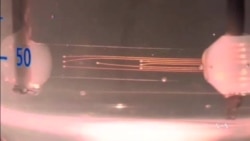A new implant that can chemically and electrically stimulate nerve growth could one day make it possible for someone with a shattered spine to walk again.
Conventional spinal implants cause inflammation and damage because they are too stiff to stay in the soft tissue surrounding the spine long enough to be effective. So bioengineer Stéphanie Lacour wondered whether making a softer implant would eliminate this mismatch between the implant and the body, bringing people closer to a cure for paralysis.
Making Softer Implants
The professor at the École Polytechnique Fédérale de Lausanne in Switzerland and her colleagues created an electronic dura mater implant or "e-dura." It gets its name from the natural protective membrane around the spinal cord tissue called the dura mater.
Older implants were placed above the dura mater instead of directly on the spinal cord tissue because, according to the researchers, the spinal cord is "one of the most demanding environments of the central nervous system." In contrast, e-dura's soft silicone material can be inserted directly underneath the dura mater, so it can provide direct electrical and chemical stimulation to the nerves in the spinal cord.
Lacour said that a stretchable metallic track, made of a combination of platinum, gold and silicone, is a unique feature of the implant. The electrodes on the tracks can deliver electrical stimulation even as the spine twists and turns.
The key in healing damaged nerves is being able to bathe the spine with chemicals, along with providing electrical stimulation. A thin, flexible tube connected to a small opening or microchannel in the implant allows the researchers to do this. E-dura's proximity to the spinal cord means that the researchers have to inject less of the drug than they did with the older, stiff implants to have an effect.
Bringing Back Movement
Lacour and her colleagues tested e-dura in paralyzed rats to see whether the design improvements would restore hind limb movement.
In their study published in Science, the researchers showed that e-dura outperformed the stif implants after several weeks of combined electrical and chemical stimulation. However, the rats could not move without the help of a harness that held them upright as they walked.
For a rat to be able to walk on its own again, the regenerated spinal cord nerves need a way to "talk" to the motor cortex, the part of the brain that controls voluntary movement. But Lacour said, at this point, "there's no link" between the brain and the stimulated spinal cord.
As many as 500,000 people suffer spinal cord injuries each year because of car accidents, serious falls and diseases, according to the World Health Organization, so making this link in rats may be the next big leap for helping many who are bound to their wheelchairs, waiting to move again.









